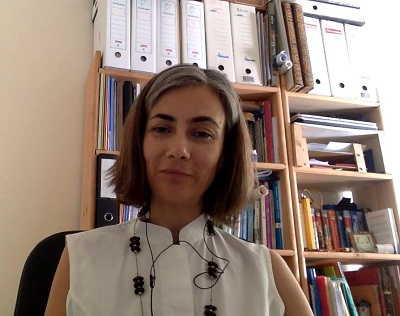For nearly 40 years, indoor horticultural lighting has changed very little: We’ve continued to use the same high-intensity discharge (HID) lamps with high-pressure sodium (HPS) or metal-halide (MH) bulbs.
Yet when we want to see better results from our plants, we tend to look down at our grow mediums and nutrient programs … always forgetting to look up at our electric sun.
Then came the first new advance in lighting, a change from the traditional core-and-coil (or magnetic) ballasts to the more energy-efficient electronic (or digital) ballasts. After that, the floodgates really opened. First came the rush of new digital HID bulbs that were more compatible with these ballasts. Next came the LED revolution. And now we have plasma lamps, induction lighting and ceramic bulbs. It’s a good time to be a photobiologist!
But which of these new technologies are best for our cannabis plants? Which are ideal for full flowering cycles, and which are more suited for the vegetative stage? Which are most useful as supplemental lighting with HID bulbs? And how exactly should we be measuring and comparing these lamps?
We’ve heard your questions, and we agree that some objective and unbiased testing is needed. So we went out and got ourselves the best scientific instruments that money can buy; collected an assortment of today’s newest lighting technologies; and set out to run our own tests to determine which lamps are the best for our indoor gardens. It certainly wasn’t easy, but in the end, we were impressed.
Light ScienceTo start, how does one compare and measure different light sources? When it comes to plant science, there are two main considerations: light quality, in the form of spectrum, and light intensity, in the form of energy. When comparing new lighting technologies, we need to measure both of these aspects.We deployed a highly sensitive and specially calibrated spectro-radiometer to measure each bulb’s light quality and to produce a spectral curve showing the range of spectrum emitted by each lamp. A spectro-radiometer is the best device for accurately measuring PAR, or photosynthetically active radiation, as it provides intensity readings at each wavelength or color as well as for the spectrum’s overall range.
Measuring LightMany bulb manufacturers incorrectly state their product’s light intensity using lumens as the unit of measurement. However, lumens are a unit of measurement for the human eye; photobiologists and botanists use PAR to measure the effects that horticultural lighting will have on plants. The spectrum is measured in nanometers (nm), representing the wavelength of each color frequency.
Light QualityPhotosynthetically active radiation is the spectrum of light that plants use for photosynthesis. PAR is typically defined as the spectral range of solar radiation from 400 to 700 nm that photosynthetic organisms are able to use in the process of photosynthesis. (Think “ROY G. BIV” from your grade-school science class.) The charts in this article show the intensity of each color wavelength as well as the total range of spectrum that each bulb emits.
Light StrengthMicromoles per square meter per second (μmol/m2/s1) is the most common unit used for measuring PAR. This unit quantifies the number of photons (discussed below) that fall within a 1-square-meter area every second.PAR can also be expressed in energy units for irradiance, in watts per square meter (w/m2) or watts per square centimeter (w/cm2). This is relevant in energy-balance considerations for photosynthetic organisms and for varying surfaces such as those of leaves. Similar units of measurement also include photosynthetic photon flux (PPF) or photosynthetic photon-flux density (PPFD), which are quantum measurements that relate precisely to the units of photon measurement such as micromoles or microEinsteins (E).As a point of comparison to better understand Table 1.1, the sun can deliver up to 2,000 μmol/m2/s1 of PAR at noon on a sunny summer day in California at the earth’s surface.
Test Results (Figure 1.1) *Editor’s note: These PAR measurements were taken at a 2-foot distance from the light source. It’s important to note that advanced growers who are better able to control the garden’s atmospheric conditions (such as temperature) should be able to keep their garden canopy closer to the lamps, somewhere between 12 to 18 inches. Moving plants closer to the light source (as well as the spectro-radiometer used to take these measurements) will result in higher PAR values that may be more in line with the manufacturers’ labels. For more information, look up the “inverse-square law.”**Please see the following product notes for more on this lamp’s PAR values.
*Editor’s note: These PAR measurements were taken at a 2-foot distance from the light source. It’s important to note that advanced growers who are better able to control the garden’s atmospheric conditions (such as temperature) should be able to keep their garden canopy closer to the lamps, somewhere between 12 to 18 inches. Moving plants closer to the light source (as well as the spectro-radiometer used to take these measurements) will result in higher PAR values that may be more in line with the manufacturers’ labels. For more information, look up the “inverse-square law.”**Please see the following product notes for more on this lamp’s PAR values.
PhotobiologySimply put, photobiology is the scientific study of the interactions between living organisms and light. For our purposes, it is specifically the study of the interactions between plants and light—which brings us directly to the process of photosynthesis.Plants use light as the primary energy supplier and catalyst in the chemical reaction that creates food for them. Plant growth is driven by photosynthesis, the process that converts water, carbon dioxide and energy from light into carbohydrates, which are the essential building blocks for plant nutrition and growth. These carbohydrates take the form of glucose, or sugars, that are the real foods used by plants for energy, growth and development.An equation for this reaction looks like this:n CO2 + n H2O + photons → (CH2O)n + n O2Or, more simply:Carbon dioxide + water + light energy → carbohydrates + oxygen.
Because plants have evolved using the sun’s natural spectrum for millions of years, the sun serves as our best gauge for what type of light plants need most. This means that the broader the spectrum—or the closer to that of the sun—the better that light will be for plant growth and development.Sunlight contains only 44 percent visible light (or PAR); the rest is made up of 52 percent infrared light and 4 percent ultraviolet light. In theory, plants could use the ultraviolet or infrared sections of the spectrum for photosynthesis, but they do not. So why is it that plants use only visible light as a source of energy for photosynthesis?The answer comes down to one very small and complex particle known as the photon. These are the particles that plant pigments, such as chlorophyll a and b, harvest from light to supply the energy needed in photosynthesis.A single photon carries a certain amount of energy depending on the wavelength. A quantum refers to the amount of energy carried by the photon. Quantum meters, such as the spectro-radiometer used in these tests, approximate the quantity of photons between 350 and 750 nm. Photosynthesis is largely driven by the number—and quality—of photons between these two wavelengths.The following provides a breakdown of the sun’s natural spectrum and how the various forms of light radiation are used (or not used) by plants during photosynthesis:
Ultraviolet light: Each photon of ultraviolet light contains too much radiation for most biological systems. Its high energy will drive electrons from molecules and break their weak bonds. The ozone layer of our atmosphere protects all life on the planet from high levels of ultraviolet radiation.
Infrared light: Each photon of infrared light doesn’t have enough energy to do useful work in a biological system. Cells do absorb this radiation, but it contains insufficient energy to drive metabolic reactions and gets converted to heat. Infrared radiation is absorbed by water and by carbon dioxide in the atmosphere.
Visible light: Each photon of visible light contains just enough energy to excite the electrons of molecules without causing damage to the cell. Visible light, or PAR, is the miracle light needed in photosynthesis. Limiting this spectrum to only a few of its wavelengths is unnatural and potentially harmful for a plant’s development.
The Photons FAQ
If the different forms of light contain photons in different quantities and qualities, does this mean some color wavelengths have more energy?Yes. Because photon energy is inversely proportional to wavelength, the energy is frequency-dependent. Consider the following:
- The energy content of a photon is directly proportional to the light’s frequency.
- As frequency decreases, wavelength increases.
- Thus, as frequency decreases, so does light energy.
- Therefore, reds are longer and have less energy. Blues are shorter and have more energy.
- In fact, blues are the frequency/wavelength with the most light energy. This makes the blue spectrum an excellent supplement to HID lighting. However, don’t mistake this to mean that plants need only blue wavelengths, or even that they need them more than the rest.
- Blue and red may be the wavelengths best absorbed by plants, but they are also less present in the sun’s natural light, which is why plants have become more efficient at absorbing them (see Figure 1.2). Still, the fuller the spectrum, the better that light will be overall for the plant’s photosynthetic processes.
Figure 1.2
Read more http://feedproxy.google.com/~r/HIGHTIMESMagazine/~3/7uLUYZnsreU/electric-sunshine-lighting-marijuana-grow-pt-1
reference: High Times Magazine
Latest
Coronavirus Strikes Massachusetts Cannabis Company Employees
Reassessing the Essential: Cannabis in the Time of a Pandemic
5 Reasons To Try Aspen Valley CBG Flower (30% Off)
High Times Cannabis Cups Go Virtual In Wake Of Coronavirus Pandemic
Drug Enforcement Administration Proposes Plan To Expand Cannabis Research
Ghana Legalizes Cannabis For Medicinal And Industrial Uses
The cheapest legal weed in Canada: Discover these cannabis ‘value brands’
Cannabis and coronavirus: Here’s what you need to know
cannabis designs
The Best Of
WHO Rules CBD Should Not Be a Scheduled Drug

Dr Cristina Sanchez PhD video interview on medical marijuana and cancer

Biochemist Dennis Hill interview; Cannabis oil as a cure for cancer.

The unofficial World Record holder for cannabis smoking part 1




